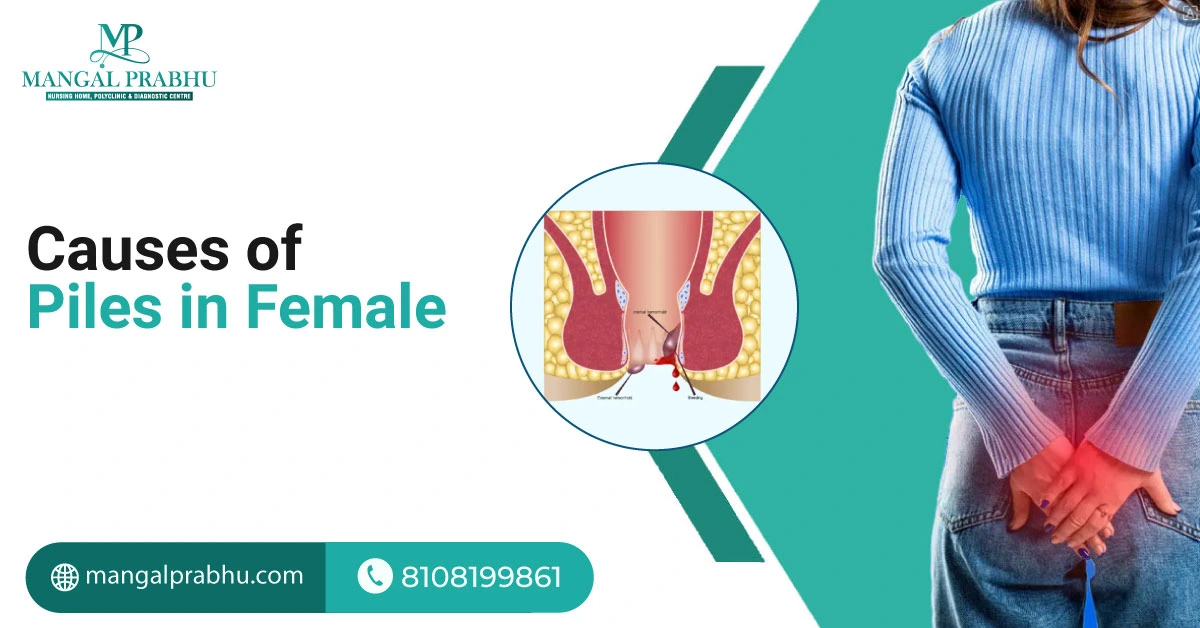
Causes of Piles in Female
Hemorrhoids, also called piles, occur when the veins in your anus or the lower rectum enlarge and become swollen. Piles are painful and can cause itching and sometimes bleeding. A piles specialist doctor in Navi Mumbai will recommend medication, minimally-invasive procedures, and sometimes surgery to ease your symptoms.
In this post, we’ll take a look at the common causes of piles in women.
Common Causes of Piles in Females
a) Pregnancy and Childbirth
Many factors can lead to piles in females during pregnancy and childbirth. For starters, hormonal fluctuations cause your vein walls to relax, which may heighten the risk of piles.
Additionally, as the mother approaches the third trimester, the growing uterus puts pressure on the pelvic region, enlarging the veins. This combined with the slower blood flow to the rectal area can result in the formation of piles during pregnancy. Women may also develop piles during childbirth, as the act of straining can trigger them.
b) Hormonal Changes
A woman undergoes significant hormonal changes during menstrual cycles, pregnancy, and menopause. These hormonal shifts can affect your dietary changes, which might lead to constipation, triggering hemorrhoids.
c) Dietary Factors
If your diet doesn’t contain sufficient amounts of fiber or is mainly composed of processed foods, you might experience hard stools. Excessive strain on the rectal veins can make you more likely to develop piles.
Lifestyle Factors Contributing to Piles
i) Sedentary Lifestyle:
If your job involves prolonged sitting or you live an inactive lifestyle, you might be more prone to developing piles than others. That happens because of reduced blood flow to the rectal area, leading to enlarged veins.
ii) Obesity:
Overweight people or those falling into the obese category are also at an increased risk of piles. The more you weigh, the higher the pressure on the pelvic region. This affects blood circulation, which may eventually result in piles.
Preventative Measures
Visit a hospital for piles treatment in Navi Mumbai to determine the most appropriate treatment plan for your case. Piles in women that occur due to temporary hormonal shifts, such as during pregnancy and childbirth, are likely to resolve on their own. Still, you must take certain preventative measures to reduce your likelihood of getting piles.
1) Dietary Adjustments:
The single most common reason for piles is excess pressure on the anal canal, which occurs when you strain excessively and frequently. To avoid that, eat a diet rich in fiber. Whole grains, green leafy vegetables, and fruits are the best examples.
2) Regular Physical Activity:
Exercise helps prevent hemorrhoids by improving blood flow to the rectal area, strengthening pelvic floor muscles, and keeping weight in check. It controls most factors that might contribute to a heightened risk of piles in females.
3) Drink Enough Water:
Aim to drink 8-10 glasses of water a day to keep the stool consistency soft. Hydration makes stool easily passable, reducing the risk of constipation and piles.
Conclusion
Although both men and women can develop piles, hormonal changes (particularly during pregnancy) make women more prone to developing them. Understanding the causes of piles in females can help you take preventative measures and reduce the risk.
